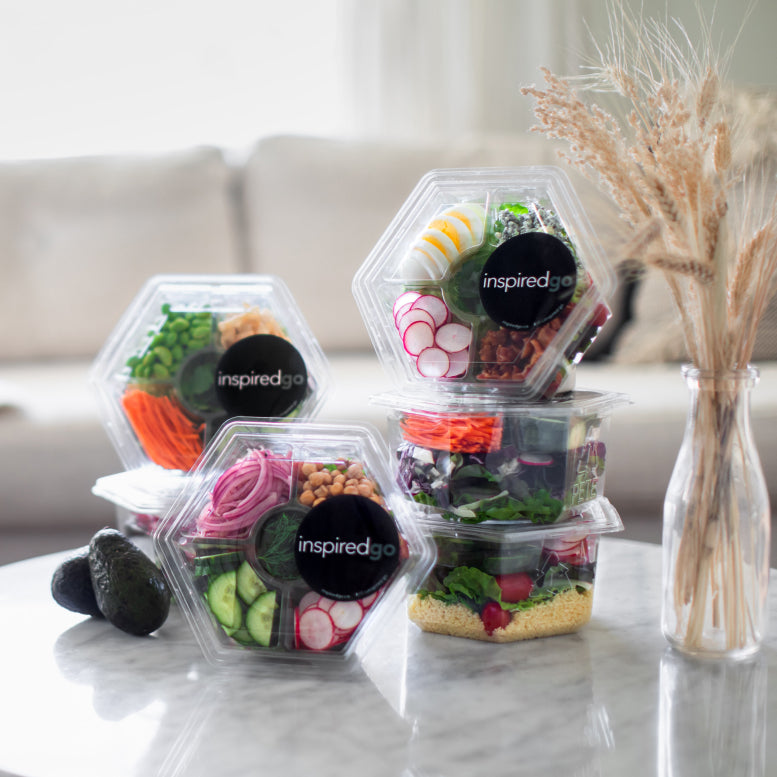Is Vegan Gluten-Free?
Table of Contents
1. Understanding the Intersection of Vegan and Gluten-Free Diets
2. Is Being Vegan Healthier for You?
3. How Are Vegan Meal Delivery Menus Designed?
4. How Does Inspired Go Make Vegan Eating Healthier?
1. Understanding the Intersection of Vegan and Gluten-Free Diets
The realm of dietary choices is vast and varied, with numerous options catering to different health needs, ethical beliefs, and personal preferences. One common query that arises in this context is whether veganism and gluten-free diets intersect. Veganism is a lifestyle and dietary choice that excludes all animal products, including meat, dairy, and eggs. On the other hand, a gluten-free diet eliminates gluten, a protein found in grains like wheat, barley, and rye, often due to health conditions like celiac disease or gluten intolerance. While these diets are fundamentally different, they can coexist. In other words, a meal can be both vegan and gluten-free. However, not all vegan or gluten-free foods are inherently the other. For instance, many vegan meals might include grains containing gluten, while gluten-free meals could incorporate animal-derived ingredients. Therefore, individuals seeking both vegan and gluten-free options must carefully read product labels or choose meals specifically designed to meet both criteria.
Order fresh salads today →


2. Is Being Vegan Healthier for You?
A well-balanced vegan diet is often associated with significant health benefits, including lower cholesterol levels, reduced risk of heart disease, and improved digestion. Plant-based diets are naturally high in fiber, antioxidants, and essential vitamins while being lower in unhealthy fats and processed sugars. However, the healthiness of a vegan diet depends on balanced meal planning to include critical nutrients such as vitamin B12, iron, and omega-3 fatty acids. Vegan meal delivery services help bridge these gaps by offering carefully crafted meals that prioritize nutritional completeness. By taking the guesswork out of meal prep, these services make it easier for customers to experience the health benefits of veganism without worrying about deficiencies or imbalanced nutrition.
Choose your salads and schedule delivery →
3. How Are Vegan Meal Delivery Menus Designed?
Vegan meal delivery menus are carefully crafted to offer both variety and balanced nutrition. Professional chefs design recipes that incorporate a mix of fresh vegetables, whole grains, and plant-based proteins to ensure every meal is satisfying and nutritionally complete. Seasonal produce often plays a key role, enhancing both flavor and nutrient density. Menus also frequently draw inspiration from global cuisines, introducing dishes such as vegan curries, pasta, and tacos. Additionally, options are available for specific dietary needs, including gluten-free, high-protein, or low-carb preferences. By rotating menus regularly, vegan meal delivery services prevent menu fatigue while ensuring customers enjoy creative, delicious meals every day.
Get fresh salads and snacks delivered →
4. How Does Inspired Go Make Vegan Eating Healthier?
At Inspired Go, nutrition is at the core of every meal, ensuring that customers get the right balance of macronutrients and essential vitamins in every bite. Their vegan dishes include protein-packed legumes, fiber-rich vegetables, and healthy fats, eliminating the common pitfalls of nutritionally imbalanced vegan meals. Unlike some plant-based convenience foods, Inspired Go avoids highly processed ingredients, focusing instead on whole, nutrient-dense options. Each meal is carefully crafted by dietitians and chefs, ensuring that customers receive the necessary nutrients for energy, well-being, and long-term health. With detailed nutritional labeling and transparent meal planning, Inspired Go makes healthy vegan eating effortless.
Try our fresh, ready-to-eat salads →
Frequently Asked Questions
The key difference between vegan and vegetarian diets lies in the exclusion of animal products. Vegetarians avoid meat, poultry, and fish but may consume animal-derived products like eggs, dairy, or honey. Vegans, on the other hand, exclude all animal products, focusing solely on plant-based foods. Veganism is often a lifestyle choice, avoiding animal products in all forms, including clothing and cosmetics.
A vegan diet consists entirely of plant-based foods, including fruits, vegetables, grains, nuts, seeds, and legumes. It excludes all animal-derived products, such as meat, fish, dairy, and eggs. This diet emphasizes nutrient-dense, whole foods, though processed vegan alternatives are available. A vegan diet, when well-balanced, supports good health and environmental sustainability, making it popular for ethical, health, and ecological reasons.
Not all vegan diets are gluten-free. While veganism excludes animal products, gluten is a protein found in wheat, barley, and rye, which are plant-based and commonly included in vegan meals. To maintain a vegan and gluten-free diet, focus on naturally gluten-free foods like fruits, vegetables, rice, quinoa, and gluten-free grains. Always check labels for hidden gluten in processed vegan foods.
On a vegan diet, you can enjoy a wide variety of plant-based foods, including fruits, vegetables, legumes, nuts, seeds, whole grains, and plant-based dairy alternatives. Popular vegan dishes include stir-fries, salads, grain bowls, soups, and curries. Incorporating fortified foods or supplements ensures you meet nutrient needs like B12, iron, and omega-3s, making the diet balanced and enjoyable.
A vegan diet can be very healthy when balanced and diverse. It’s rich in fiber, vitamins, and antioxidants, while being lower in saturated fat and cholesterol. These factors contribute to better heart health, weight management, and reduced risk of chronic diseases. However, careful planning is essential to ensure adequate intake of nutrients like vitamin B12, iron, and protein for overall health.

